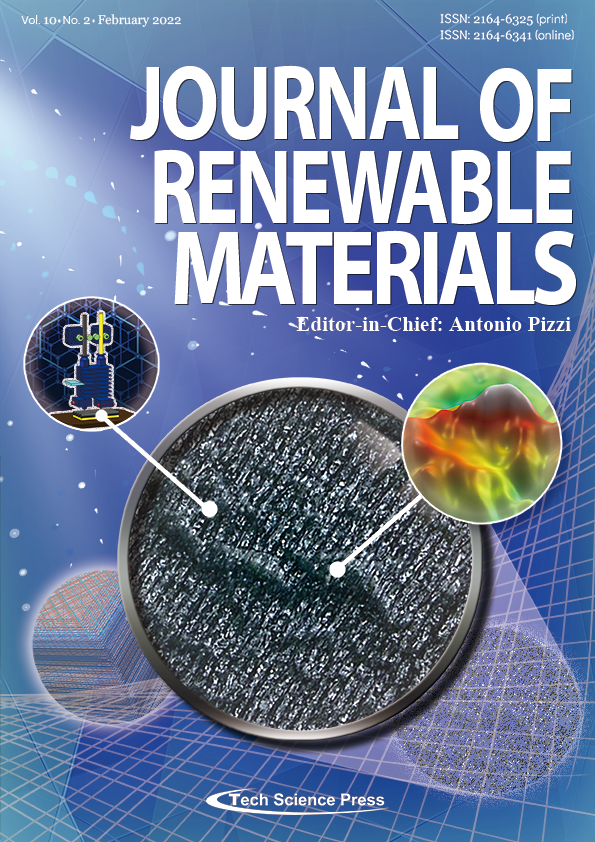Tunable Luminescence Properties and Elucidating the Electronic Structures of Single-Phase Spherical BaWO4: Dy3+, Tm3+, Eu3+ Phosphors for Warm-White-Lighting
Zun Bi1,2,3, Ke Jia1,2,3, Yunfei Liu1,2,3,*, Yinong Lyu1,2,3,*
Journal of Renewable Materials, Vol.10, No.2, pp. 431-451, 2022, DOI:10.32604/jrm.2022.016735
- 30 August 2021
Abstract A series of uniform single-phase spherical BaWO4: Dy3+, Tm3+, Eu3+ phosphors were prepared via a microwave hydrothermal method by using trisodium citrate dehydrate as surfactant. The phase structure, morphology and photoluminescence properties were measured by powder X-ray diffraction, scanning electron microscope and fluorescence spectrometer, respectively. The results show that uniform spherical microcrystals with diameters in the range of 2–4 μm are obtained. And the phase and morphology of samples are not significantly changed by doping rare earth (RE3+) ions. Under the excitation wavelength of 356 and 365 nm, the samples BaWO4: 0.03Dy3+, yTm3+ can emit cold white light. In order… More >
